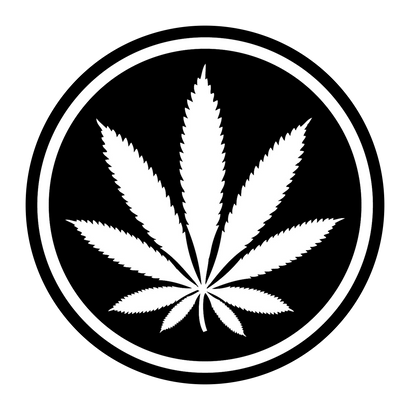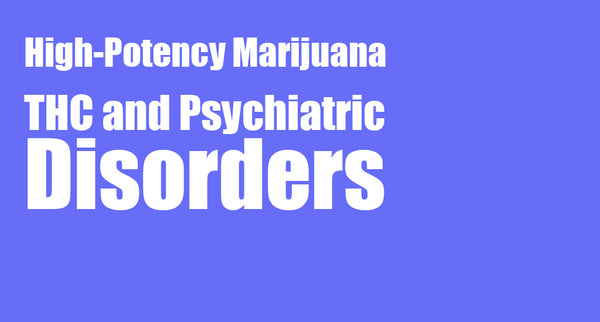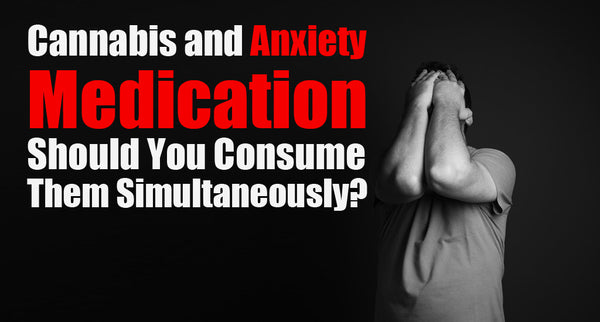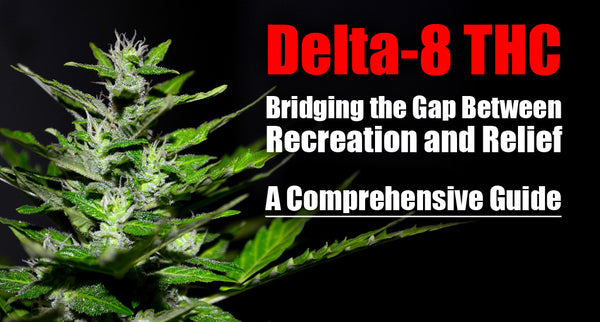
Explaining Cannabis Labels: A Guide to Understanding and Safe Use
Understanding the testing label on your cannabis is not only important for your well-being but also for choosing high-quality cannabis products.
The label will contain essential information to help you make an informed decision about the product you are considering using. Here's what you'll typically find on a cannabis product label:
-
Product Name: The name of the cannabis product or strain, which often reflects its unique characteristics or branding.
-
Type: The type of product, such as flower (buds), extracts, concentrates, edibles, tinctures, topicals, or vape cartridges.
-
Weight: The weight or quantity of the product, usually measured in grams or milligrams.
-
Dosage: For edibles and tinctures, the amount of cannabinoids (e.g., THC and CBD) per dose. This helps you gauge how much you're consuming at a time.
-
Potency Analysis: The percentage of major cannabinoids like THC and CBD present in the product. This tells you the strength of the product and can guide your dosage decisions.
-
Terpene Profile: Some labels may include the dominant terpenes in the product, providing insight into its potential effects and flavors.
-
Expiration Date: The date until which the product is expected to remain fresh and effective.
Remember, everyone's response to cannabis can vary, so start with a small amount, especially if you're trying a new product or strain. If you have any health concerns or are taking medications, it's best to consult with a healthcare professional before using cannabis products.
Related article: Beginner’s Guide to Consuming Cannabis - 8 Tips to Elevate Your Experience
Potency Analysis
The "Potency Analysis" section on a cannabis product label provides essential information about its strength and composition. It details the percentages of various cannabinoids – the active compounds in cannabis, like THC (psychoactive) and CBD (non-psychoactive) – and terpenes, which are responsible for the aroma and flavor.
This section helps users understand the product's potential effects and therapeutic qualities, guiding them in selecting a product suited to their needs and preferences. It's a crucial tool for informed decision-making, especially for those seeking specific effects or managing sensitivities to certain compounds.
The Power of THC and CBD: A Teamwork Tale!
In addition to the well-known cannabinoids like THC, CBD, and THCA, cannabis contains a plethora of other cannabinoids and terpenes that work together in what scientists refer to as the "entourage effect." This fascinating phenomenon occurs when the various compounds within the cannabis plant interact synergistically, enhancing each other's effects and creating a unique and more profound overall impact.
More about this; THC and CBD, and the Entourage Effect!
For THC, different products have varying amounts. Flower cannabis products can have THC levels between 0% and 30%. Extracts, concentrates, and vape cannabis products may contain 40% to 80% THC or even higher amounts. Edible cannabis products have doses with 1mg to 30mg of THC, and the total THC in the package ranges from 5% to 30%. Tincture cannabis products generally have less than 5% THC.
Related article: Marijuana Edibles for the First Time, Dosage and What to Expect
Apart from THC and CBD, there are other cannabinoids on the label, though we'll mainly focus on THC, CBD, and THCA. THCA is an inactive cannabinoid that only becomes intoxicating when exposed to intense heat, like when you smoke, vape, dab, or cook cannabis.
Terpene Profile
Imagine the cannabis plant as a team, with each member contributing their special skills to achieve a common goal. Each cannabinoid and terpene has its own specific properties and functions, and when combined, they produce a more complex and diverse experience than any single compound could provide alone.
Terpenes are aromatic compounds found in cannabis and many other plants. They are responsible for the distinctive scents and flavors associated with different strains of cannabis. More importantly, terpenes can also interact with cannabinoids, influencing their effects and potential benefits. For example, some terpenes might have relaxing properties, while others may promote focus or provide pain relief. This is why different strains or products can produce varying effects, even if they have similar THC or CBD levels.
More about this; What Are Terpenoids And What Do They Do?
Dosage
When it comes to dosing cannabis products, it's essential for consumers to approach it with caution and responsibility. The appropriate dosage can vary significantly from person to person due to factors such as tolerance, body weight, metabolism, and individual sensitivity. New users or those with limited experience should start with low doses to gauge their reaction and gradually increase as needed.
To assist consumers in making informed decisions, cannabis products should have clear and detailed information on their labels. The label should prominently display the product's name, type (e.g., flower, edible, tincture), and the strain or variety of cannabis used.
The label should also indicate the concentration of active compounds, such as THC (tetrahydrocannabinol) and CBD (cannabidiol), expressed in milligrams per serving or per package. This information is crucial for consumers to understand the potency and potential effects of the product.
Understanding Pesticide Testing in Cannabis
As cannabis consumers, it's crucial to be informed about the information presented on product packaging. The absence of information on pesticide, mold, and heavy metal test results could potentially affect our health, especially for those who consume cannabis regularly.
Pesticides are substances used to control pests like insects and fungi, but not all of them are safe for human consumption. While a limited number of pesticides are prohibited, hundreds of others are permitted for use, including some natural options like terpenes and predatory insects.
Let's take a look at a few popular chemical pesticides used on cannabis:
-
Nukem: This organic pesticide, created by Flying Skull, is a favored choice among cannabis growers because it doesn't leave a toxic residue on the buds, preserving their quality.
-
Regalia: As a biofungicide, Regalia enhances the plant's natural defenses against pests and fungus without directly attacking them. This makes it a healthier alternative to other chemical pesticides.
-
Venerate: Offering great versatility, Venerate is a bioinsecticide that can be used both indoors and outdoors, as well as in greenhouses. It can be applied to the soil or sprayed in the air, making it a popular option in the cannabis industry.
Being aware of these pesticide options and their potential effects can help us make more informed choices as responsible cannabis consumers. Remember, knowledge about the products we use is essential for our well-being and safety.
"Pesticide Free" and "Pesticide Tested"
Labels can sometimes be tricky!
When you see "Pesticide Free" on a product, it might sound reassuring, but the reality is more complex. This label could mean that natural pesticides or approved chemicals were used, but the test results showed zero chemical pesticides. Alternatively, the growers might have used approved chemicals and diligently removed them before harvesting, resulting in pesticide-free buds.
Similarly, when you come across the label "Pesticide Tested," it means that the cannabis underwent some level of pesticide testing, but it doesn't reveal the actual test results. The product might have tested with low pesticide levels, but we don't have all the details.
To make smarter choices, look for third-party certifications such as 'Clean Green Certified' or 'Certified Kind' that offer more trustworthy and transparent information about the cannabis you're considering. These certifications ensure that the product meets specific quality and safety standards, providing consumers with greater confidence in their choices. By being informed about what's in your cannabis, you can ensure a safer and healthier experience.
Knowing What's in Your Cannabis: Transparency and Safety Matter!
In addition to understanding what's in the food we buy at the grocery store, it's equally crucial to know the molecular compounds and foreign ingredients in our cannabis products. Why is this so important? Let's find out:
-
Transparency: Having access to a detailed list of compounds and ingredients used in cannabis products helps us know exactly what we're getting. It's like being able to see through a clear window into the product, ensuring that nothing is hidden from us.
-
Health Safety: Just like we care about the quality of the food we eat, we should also care about the safety of the cannabis we consume. Knowing the ingredients and potential foreign substances, like pesticides, can help ensure that the cannabis is safe for us to use.
-
Knowledge about Consumption: When we have information about what's in our cannabis, it empowers us to make informed decisions. Understanding the components of what we're consuming allows us to be more conscious consumers.
Now, why is this especially vital for cannabis? Well, when we smoke or inhale cannabis, the compounds directly enter our central nervous system. This means that any harmful substances can have a more immediate impact on our health. So, being well-informed about what we're consuming is crucial to ensure a safer and healthier cannabis experience..
Understanding Cannabis Certifications and Test Analysis for Informed Choices
As consumers, it's essential to have peace of mind about the cannabis products we use. Different certifications exist, each with its own standards for cannabis growers. While these certifications vary, they all ensure that certified cannabis products are grown more responsibly and are healthier compared to those without any certification.
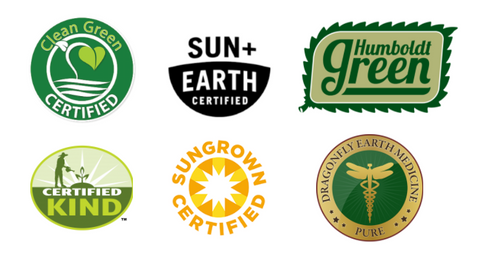
- Clean Green Certified
- Certified Kind
- Sun + Earth
- Sungrown Certified
- Humboldt Green
- DEM Pure Certification
Apart from certifications, there's another way to be knowledgeable about cannabis products: requesting analysis results when making a purchase. Growers provide test information from third-party companies to the dispensary when bringing in new product shipments. This information is kept at the dispensary and can be requested by customers. Keep in mind that it might take a little time for dispensary staff to find and share the test results, so patience is essential.
Let's get technical!
How Cannabis is Tested and What Cannabinoid Percentages Tell You
Though each testing laboratory tests cannabis in their own proprietary way, there are two main methods that laboratories use to test cannabis: gas chromatography and liquid chromatography.
First: What is Gas Chromatography Method?
Gas chromatography, to put it simply, involves grinding the cannabis buds, heating it to vaporize the cannabinoids and terpenes, and sending it through a machine that separates each molecular compound found in cannabis, like THC and CBD. Consequently, heating the ground buds during gas chromatography causes the test results to be measured in terms of active potential.
As mentioned earlier, THCA is the acidic form of THC and requires heat to decarboxylate (remove the carboxyl group). When using gas chromatography, the ground cannabis is heated to remove the carboxyl group, which means that the test label will only show the activated cannabinoid total.
Gas chromatography makes the test label on cannabis packaging very simple but may not be entirely accurate for flower products depending on the volatility (evaporation rate) of the terpenes and cannabinoids when it is burned by the consumer.
For example, the buds that are sent to the testing lab are freshly cured, but the buds that make it to the consumer have had to sit and wait for approval and packaging, allowing them to dry out further. Factors like these may seem negligible, but will change the accuracy of a gas chromatography test label.

To interpret a cannabis test label provided using the gas chromatography method, please see the product image of a Northwest Concentrates’ Presidential OG dab. This label shows:
- Total Cannabinoids = 82.3%: this means that 82.3% of the dab material consists of cannabinoids, including terpenes, and the rest of the dab is residual plant material.
- THC = 72.7%: this means that 72.7% of the dab material is specifically THC, the cannabinoid responsible for euphoria in cannabis.
- CBD = 0.00%: this means that there is zero CBD in the dab material. CBD is still included on test labels despite having a zero percentage because it is the most naturally abundant cannabinoid and is usually required.
- Terps = 4.55%: this means that 4.55% of the dab material consists of terpenes. The terpene percentage will give you an indicator of how flavorful your cannabis will be, as well as how euphoric.
- If we add the percentages of THC and Terps together: 72.7% + 4.55% = 77.25%. This number is shy of the Total Cannabinoid percentage of 82.3%. This means that 5.05% of the cannabinoids in this dab are not included on the test label. The only way to know for certain what those cannabinoids are is to request the quality analysis results!
Gas chromatography is slowly becoming less popular than liquid chromatography because liquid chromatography is more precise. However, liquid chromatography provides a test label that is more difficult to interpret.
Second: Liquid Chromatography Method
Liquid chromatography, to put it simply, involves grinding the cannabis buds, adding a solvent (liquid that helps break down the plant material), and sending the ground up buds through a machine that separates each molecular compound, like THC and CBD. Liquid chromatography uses chemicals instead of heat to extract the terpenes and cannabinoids from the cannabis buds, providing test results in both potential and active percentages.

While this type of test label is more precise, it is also more difficult to interpret. Take, for example, the test label of Elon Musky Sugar Crystals from Lifted Cannabis:
- Total THC = 63.87%, but THCA = 71.00%: this means that the carboxyl group in the THCA molecule gives THCA more mass in the plant material. Once heated (decarboxylated), THCA loses the carboxyl group, leaving 63.87% THC. If a test label only includes the THCA percentage, you can use the formula below to calculate the total THC percentage:
THC + THCA(0.877) = THCTOTAL
When it comes to reading the test labels for cannabis buds, it’s important to note that all of these cannabinoids are stored in the trichomes (the white hairs on the surface of the buds). If the test label shows a THC percentage higher than 25%, the bud material should have at least 25% percent trichomes! If the buds look dull and the test label promises a high THC percentage, we welcome you to question the accuracy of the label (more on this topic included in the conclusion of this article).
- Total CBD = 0.17%, but CBDA = 0.19% for the same reason: when CBDA loses its carboxyl group through heat, it will lose enough mass to reduce the overall CBD percentage to 0.17%.
- Total Terps = 8.5%: the terp percentage for Elon Musky is nearly double compared to the Presidential OG in the previous example. This dab should be significantly more flavorful and potent as a result.
- Notice that Total Cannabinoids = 81.00%. Adding Total THC + Total CBD + Total Terps = 72.54%, which is 8.46% short of 81.00%. This means that 8.46% of the cannabinoids found in this Elon Musky dab are not included on the test label.
As mentioned earlier, the only way to know exactly what those other cannabinoids are is to get the test results from the dispensary. As the cannabis industry continues to get closer to federal legalization and the testing industry nears a $2 billion industry, the regulations and expectations for cannabis testing needs better standardization and more informative test labels. For example, testing data should be on the grower’s or the dispensary’s websites for customers to easily find.
Conclusion
Cannabis test labels can provide a wealth of information about the cannabis we intend to purchase and consume. Testing laboratories have a lot of responsibility in the industry; they protect consumers from inhaling mold, pesticides, and heavy metals, they tell us how many cannabinoids we can find in our cannabis, and they give us insight into the types of effects our cannabis will give us.
As cannabis consumers and influencers of the cannabis culture, we also have a responsibility to understand the information provided by test labels and understand their shortcomings to improve the industry in the future. Testing laboratories have been shut down for faking THC content results, for falsifying pesticide results, and black market cannabis consumers have been hospitalized for consuming untested cannabis with mold and even lead.
Let us know what products you think have the best packaging and most informative test labels in the comments below!
About the Author
Morgan Worley is a business development professional with a passion for the cannabis industry. After seeing the medicinal benefits cannabinoids can have, she decided to transition from opening new restaurants and coffee shops to working in the cannabis industry. Since 2018, Morgan has gained experience in the industry as a medical consultant, dispensary manager, cannabis trade show producer and traceability software saleswoman. Outside of the workplace, Morgan strives to live a healthy lifestyle modeled after Blue Zones.
